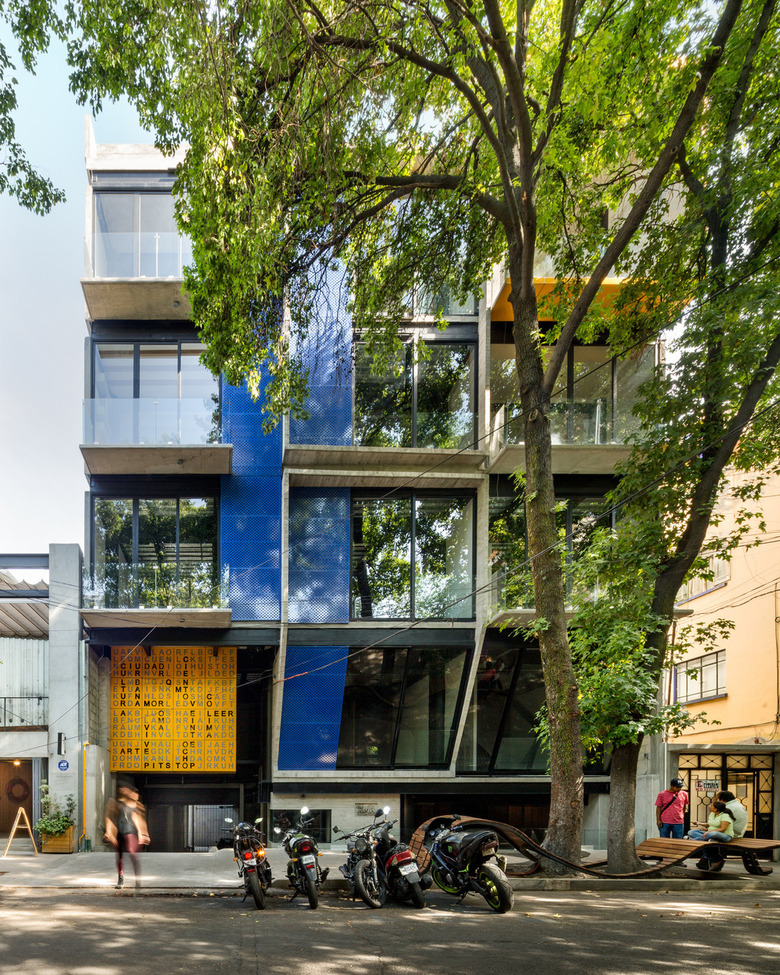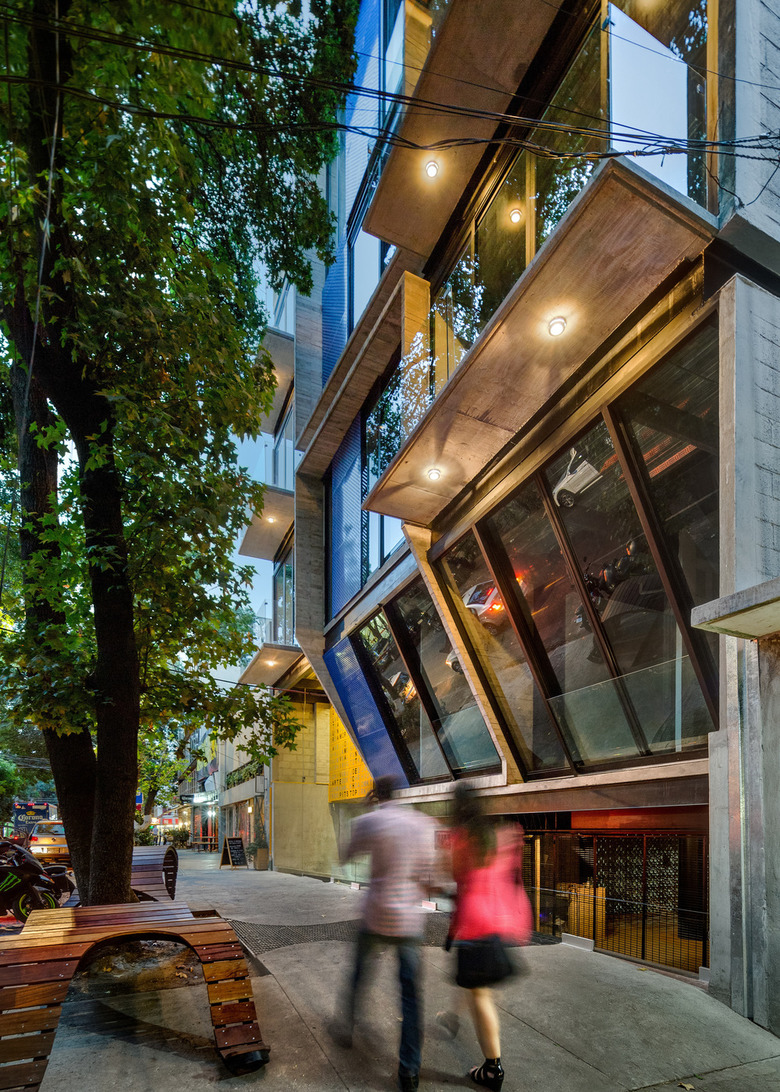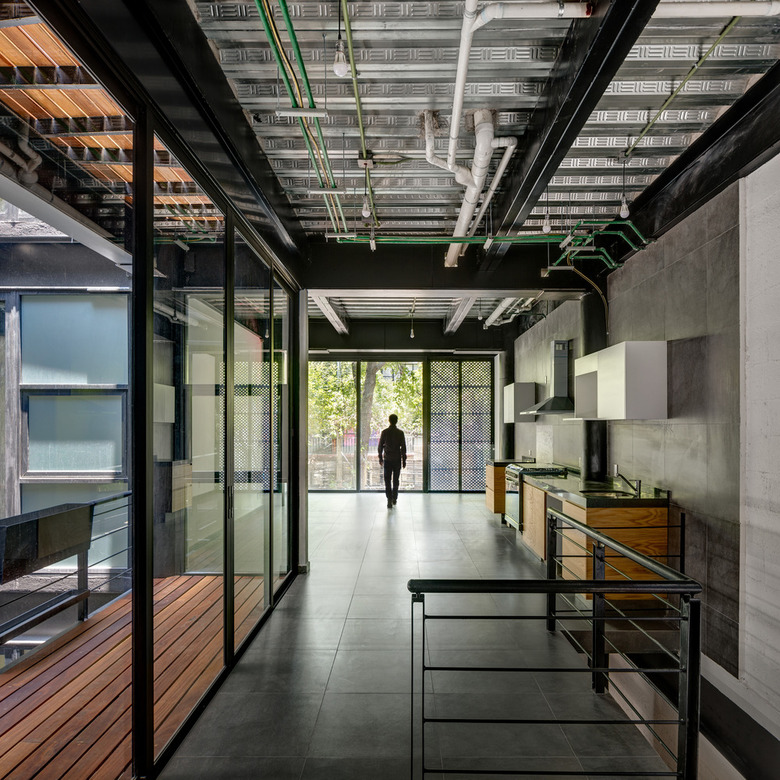Arqmov Workshop
ColiRoma CientoVeinteOcho
Arqmov Workshop
24. October 2016
Photo: Rafael Gamo (All photographs courtesy v2com)
This project is part of the urban fabric of the Colonia Roma Norte in Mexico City.
This project is part of the urban fabric of the Colonia Roma Norte in Mexico City. The district’s features and use of public space offers a unique perspective on progressive neighborhood living within the city, and as such, reflects contemporary society, where life and living happens not only in our private spaces but also in our nearby public spaces. Activities, like those of the Condesa-Roma Cultural Corridor, generate vibrant personal relationships with neighbors that allow for living together in the public space. This is how the concept of livable space and lifestyle has a direct impact on this residential project.
Photo: Rafael Gamo
The building is configured using conceptual elements of public-private space. First of all, the building and its urban setting lead to spatial permeability between the two through an “urban pit stop”. This is a flexible space of public-private interrelationships, located a half-level below the sidewalk, that can become a gallery, forum or place for interacting during the Cultural Corridor, etc. It can also be a common area for building residents, turning into an exclusive space for gatherings if required, allowing for flexibility in use and reaffirming the impact of neighborhood living on the area. Additionally, a public bench is built around an existing tree outside the main façade, where bicycles can be parked or where pets and people can sit and mingle freely.
Photo: Rafael Gamo
On the other hand, from a residential perspective, the building consists of 8 apartments, 2 town houses, 2 penthouses, a roof garden and 2 subterranean parking levels. The apartments have a linear spatial configuration, generating a sequence of interior cubes of light and natural ventilation across their inner walls. This affords street views and views toward the inside and back cubes, which produce spatial transitions along the linear path of the apartment, exposing light, shade and indoor and outdoor environments. There is an apartment on the first level configured as a studio-loft. Another of the apartments on the fourth level plays with the open space by preserving the living room-dining room as an open terrace of double height, and the top of an existing tree relates spatially as an element of nature. The townhouses and penthouses have two levels, two overlook the street and two overlook the rear light and ventilation cubes, maintaining the spatial transition and revealing the indoor and outdoor environments. The roof garden has 6 private areas and a spa in the common area, encouraging and facilitating interaction among neighbors.
Photo: Rafael Gamo
The balconies and the spatial configuration of the apartments are visible from the main façade. In the center are the 2-storey blocks. The studio-loft appears as a pewter cube with urban phrases, which calls attention to the vehicle and pedestrian access. At the top, a 2-storey cube with pewter details highlights the apartment with the open terrace. The existing tree and the public bench also interrelate well. Everything is a communication of components and elements, permeability of spaces, interaction of public and private use.
Photo: Rafael Gamo
The overall finishes are exposed: the structure is based on metal columns that are painted black, with exposed intermediate floors made of corrugated metal; the flat slab support system uses reinforced concrete which holds an exposed concrete ceiling; the general interior installations are exposed, except for the service areas, the window frames are black aluminum with clear glass. The main façade has pewter details and sliding panels of perforated laminate.









